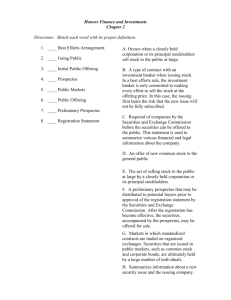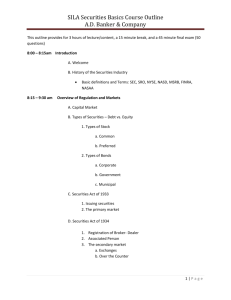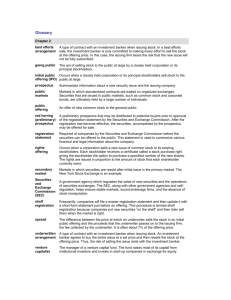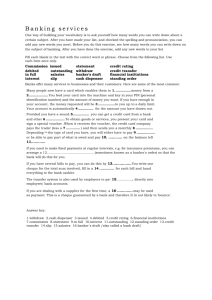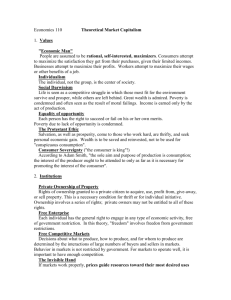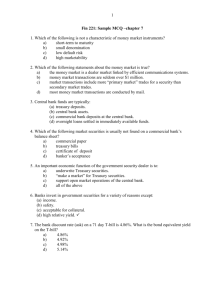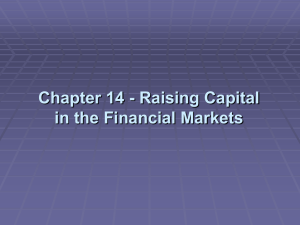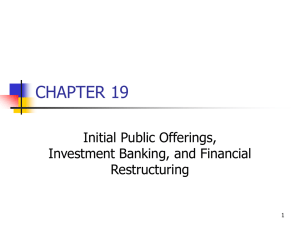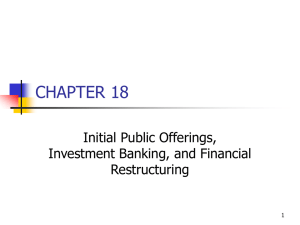Introduction to Financial Management - B-K
advertisement
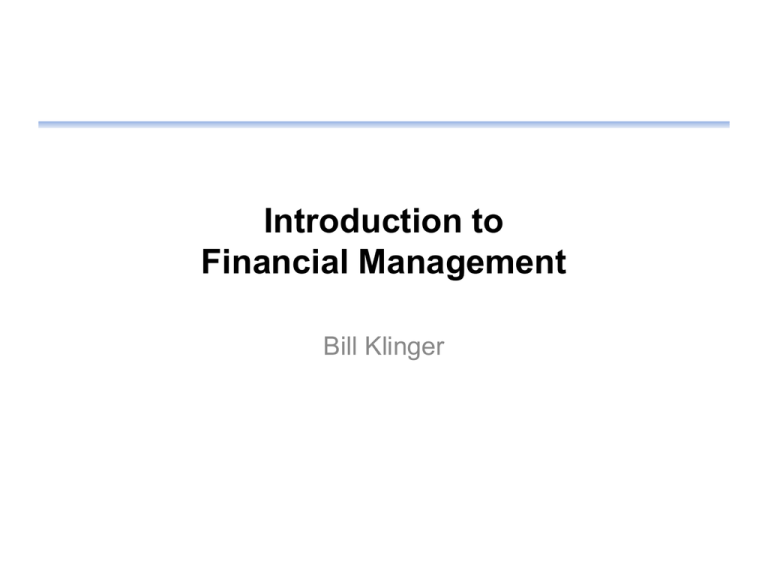
Introduction to Financial Management Bill Klinger Introduction to Financial Management • Introductions – Me – You • Syllabus • Class procedures • Class expectations – A recent study showed that 83% of people who lost their job, lost it because of attendance or attitude. • Daily – Listen to 1130 AM – Watch CNBC Goal of the Firm • Goal of the firm – “Maximize shareholder wealth” – Why not maximize profits? – Why not maximize sales? Market share? • How will we measure this? – Stock price • What influences this measure? – Profits – Future expectations of performance • How does this goal benefit society? Five Principles of Finance 1. Cash flow is what matters • • Difference between profits and cash flow Care about incremental cash flow 2. Money has a time value • • Dollar today is worth more than a dollar tomorrow. Why? Opportunity cost 3. Risk requires reward • • • Return for delaying consumption Return for taking risk – investors & business people hate risk Risk requires expected return Exp return Risk Five Principles of Finance 4. Market prices are generally right • • • Markets fully reflect all available information at any instant in time Efficient market hypothesis Stock prices can be used to measure the value of a firm 5. Conflicts of interest cause agency problems • • • “Agents” are managers who act on behalf of the owners Problem due to separation of ownership and management May result in conflicts of interest o o • E.g. managers may try to keep jobs rather than max firm wealth E.g. managers may work to get a bonus Should be monitored by Board of Directors Recent Lessons • Cash flow is what matters – Dot com bubble • Money has time value – Daily purchase decisions • Risk requires reward – Financial crisis and over-leveraging – Long-Term Capital Management, Lehman Brothers • Market prices are generally right – Many hedge funds bet against the market… and lost • Conflicts of interest cause agency problems – Runaway executive compensation – Enron Finance • Primarily about managing money • Also about management and interpretation of data • Chief Financial Officer, CFO – Controller • Accounting • Data processing – Treasurer • Cash management • Financial planning Corporate Forms • Sole proprietorships • Partnerships – General – Limited • Corporations – Legal entity separate and apart from its owners • Limited Liability Companies, LLCs Financial Markets • Capital markets – Financial institutions that help raise long-term capital – Long-term means longer than one year • Ways to transfer capital – Direct transfer • Angle investors, Venture Capitalists – Indirect transfer using investment banker • Syndicates will buy entire issue of securities and re-sell them – Indirect transfer using financial intermediary • Intermediaries hold investments for individuals • E.g. insurance companies, mutual funds, pension funds Financial Markets • • • • Regulated by the Securities and Exchange Commission (SEC) Public vs. private placement Primary vs. secondary markets Money markets – T-bills, CDs, commercial paper – Mature in less than one year • Spot vs. futures markets • Organized security exchanges – Have a physical presence – E.g. NYSE, AMEX, … • Over-the-counter markets – Informal network of broker/dealers – NASDAQ Investment Banking • Investment banker – Specialist who underwrites new securities – Consultant on new offerings • Underwriting – Purchase and resale of new security issues – Risk of resale at a profit assumed by investment banker – Syndicate – group of underwriters • Spread – Difference between price paid to company and price sold at Intro to Excel • Basics – Arithmetic – Cell references – Color • Practical usage – – – – – – One period with interest rate Multiple periods with interest rate Multiple periods with interest rate and constant additions Name cells Income statement Multiple period income statements with growth rates



